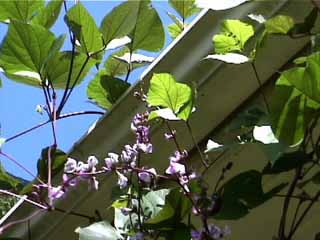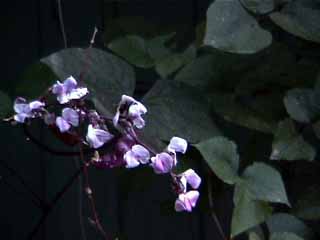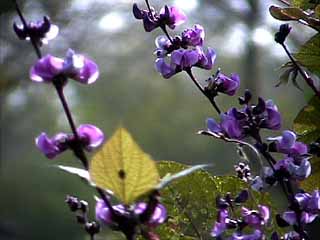Plant Profiles Index > Dolichos lablab
The first time I saw a hyacinth bean vine it was smothering an arbor at Barton Springs Nursery. Long stems of bright pink flowers reached for the sky. Wow! I bought one little plant. From that plant I collected enough seeds to have plants every year since.
I grow hyacinth bean as an annual vine whenever I need to cover up something quickly. Although it is said to be more drought tolerant than other beans, it grows most lushly with a steady supply of water. The twining vines will snake up a trellis or through a small tree. The bean pods are a deep, glossy purple. (There is a white variety also.)
I'm still trying to find the best time to plant them. Like most members of the bean family, if you plant them too early, the seeds will rot in the cold damp ground. However, plant them too late and you will spend the months until fall watering them.
The mature seeds are black with a white lip, very curious and strange and potentially tempting to young children. Although used as a food source for humans and livestock in Africa and Asia, the dry seeds are poisonous. To cook the dry beans safely, you must cook them in several changes of water. The young pods, when cooked like string beans, are said to have particularly "beany" smell.
However, as an ornamental vine, it's great. It is a tender perennial and will live and flower until a hard freeze. But after December, the old leaves look ratty. I tear it out and plant new vines each year.
Elsewhere on the web
An interesting paper on Hyacinth Bean: Stems for the Cut Flower Market.

Photo: Dolichos lablab is a quick-growing summer vine.

Photo: Dolichos lablab. September 26, 2003. Austin, Texas.

Photo: Dolichos lablab. November 24, 2002. Austin, Texas.